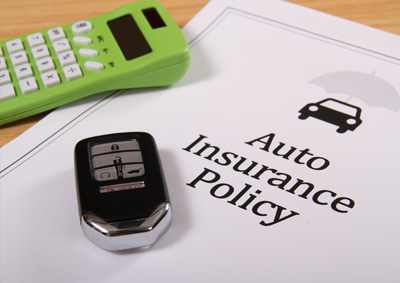Who Has the Cheapest Auto Insurance Quotes for a School Permit in Minnesota?

Wouldn’t this article be short if we could tell you instantly the company that has the cheapest insurance for a school permit? That is not the case, however, as there are many unknown elements such as the amount of liability insurance you need, if you rent or own your home, your credit score, and whether or not you have had gaps between policies, that all have an effect on the price of a policy. In this article, we will teach you about some of these criteria and hopefully give you enough understanding to have some help in finding cheaper rates.
Deciphering which company offers the best insurance rates for a school permit will take more work in order to find the most economical policy.
Every insurance company uses a slightly different approach for determining prices, so let’s look at the rankings for the insurance companies that tend to be cheaper in Minnesota.
Find Cheaper Car Insurance for Students
Click Here to Start Your Quote
| Rank | Company | Cost Per Year |
|---|---|---|
| 1 | Travelers | $661 |
| 2 | Farm Bureau Mutual | $805 |
| 3 | USAA | $823 |
| 4 | Western National | $937 |
| 5 | West Bend Mutual | $952 |
| 6 | The Hartford | $954 |
| 7 | Allied | $1,210 |
| 8 | State Farm | $1,213 |
| 9 | California Casualty | $1,214 |
| 10 | American Family | $1,230 |
| 11 | General Casualty | $1,261 |
| 12 | Auto-Owners | $1,295 |
| 13 | Farmers | $1,351 |
| 14 | Nationwide | $1,378 |
| 15 | Auto Club Group | $1,393 |
| 16 | Country | $1,412 |
| 17 | Allstate | $1,423 |
| 18 | North Star | $1,446 |
| 19 | Progressive | $1,463 |
| 20 | MetLife | $1,581 |
| Compare Rates Now Go | ||
Travelers offers some of the best car insurance rates in Minnesota at around $661 annually. Farm Bureau Mutual, USAA, Western National, and West Bend Mutual would also make the list of some of the more affordable Minnesota car insurance companies.
As shown in the table above, if you currently have coverage with USAA and switched to Travelers, you might see annual savings of around $162. Drivers with Western National may save as much as $276 a year, and West Bend Mutual insureds might lower prices by $291 a year.
These policy rates are averages for all types of drivers and the different vehicles they drive and are not factoring in a rate increase for a school permit. So the insurer that fits your age and vehicle best may not even be in the above list. That underscores the importance of why you need to compare as many prices as possible using your own driver data and vehicle information.
When shopping for cheaper car insurance for a learners permit, one of the many criteria that is used to calculate the cost of insurance is where you keep your car in Minnesota. Cities that have higher claim levels or more people like Maplewood, Saint Paul, and Bloomington are more likely to have higher rates, whereas more rural areas have the luxury of lower rates.
The information below lists the most expensive places in Minnesota for a school permit in which to buy car insurance.
| Rank | City | Premium Per Year |
|---|---|---|
| 1 | Maplewood | $2,066 |
| 2 | Minneapolis | $2,058 |
| 3 | Saint Paul | $2,049 |
| 4 | Richfield | $1,814 |
| 5 | Bloomington | $1,809 |
| 6 | Blaine | $1,801 |
| 7 | Brooklyn Park | $1,798 |
| 8 | Duluth | $1,794 |
| 9 | Coon Rapids | $1,756 |
| 10 | Plymouth | $1,731 |
| 11 | Woodbury | $1,731 |
| 12 | Edina | $1,725 |
| 13 | Minnetonka | $1,723 |
| 14 | Eden Prairie | $1,723 |
| 15 | Saint Louis Park | $1,720 |
| 16 | Maple Grove | $1,690 |
| 17 | Saint Cloud | $1,686 |
| 18 | Eagan | $1,678 |
| 19 | Burnsville | $1,675 |
| 20 | Shakopee | $1,659 |
| Find the Best Rates Go | ||
Information shown are approximated as the specific zip code location can alter insurance rates noticeably.
The diagram below shows how different deductible levels can change premium costs when quoting cheap insurance for a school permit. The premiums assume a married male driver, comp and collision included, and no discounts are taken into consideration.
google.charts.setOnLoadCallback(drawDfdqcibChart);function drawDfdqcibChart() {var data = google.visualization.arrayToDataTable([[‘Age of Insured’, ‘$100 Deductible’,’$250 Deductible’,’$500 Deductible’,’$1,000 Deductible’],[‘Age 20’, 2693,2459,2203,1957],[‘Age 30’, 1417,1293,1151,1013],[‘Age 40’, 1361,1249,1117,991],[‘Age 50’, 1245,1143,1025,911],[‘Age 60’, 1223,1123,1007,895],[‘Age 70’, 1399,1291,1167,1049]]);var options = {title: ‘Deductibles and Car Insurance Prices in Minnesota’,titleTextStyle: {color: ‘#333’,fontSize: 17,bold: true},width: ‘100%’,height: 700,’chartArea’: {left:100,top:50,’width’: ‘100%’,’height’: ‘80%’},legend: {position: ‘bottom’,textStyle: {fontSize: 12}},bar: {groupWidth: ‘80%’},colors: [‘#6791b9′,’#75a8d8′,’#98bee2′,’#bad4ec’],hAxis: {title: ‘Annual Auto Insurance Cost for Average Vehicle’,minValue: 0,format: ‘$###,###’},vAxis: {title: ‘Age of Insured’}};var formatter = new google.visualization.NumberFormat({fractionDigits: 0,prefix: ‘$’});formatter.format(data,1);formatter.format(data,2);formatter.format(data,3);formatter.format(data,4);var chart = new google.visualization.BarChart(document.getElementById(‘qcibdfd’));chart.draw(data, options);}
As shown above, a 50-year-old driver could lower rates by $220 a year by switching from a $100 deductible to a $500 deductible, or save $334 by using a $1,000 deductible. Youthful drivers, such as the Age 20 example, could save up to $736 or even more by using a higher deductible.
If you do decide to increase your deductibles, it’s a good idea to have enough spare savings to enable you to cover the extra out-of-pocket expense, which is the one disadvantage of using larger deductibles.

